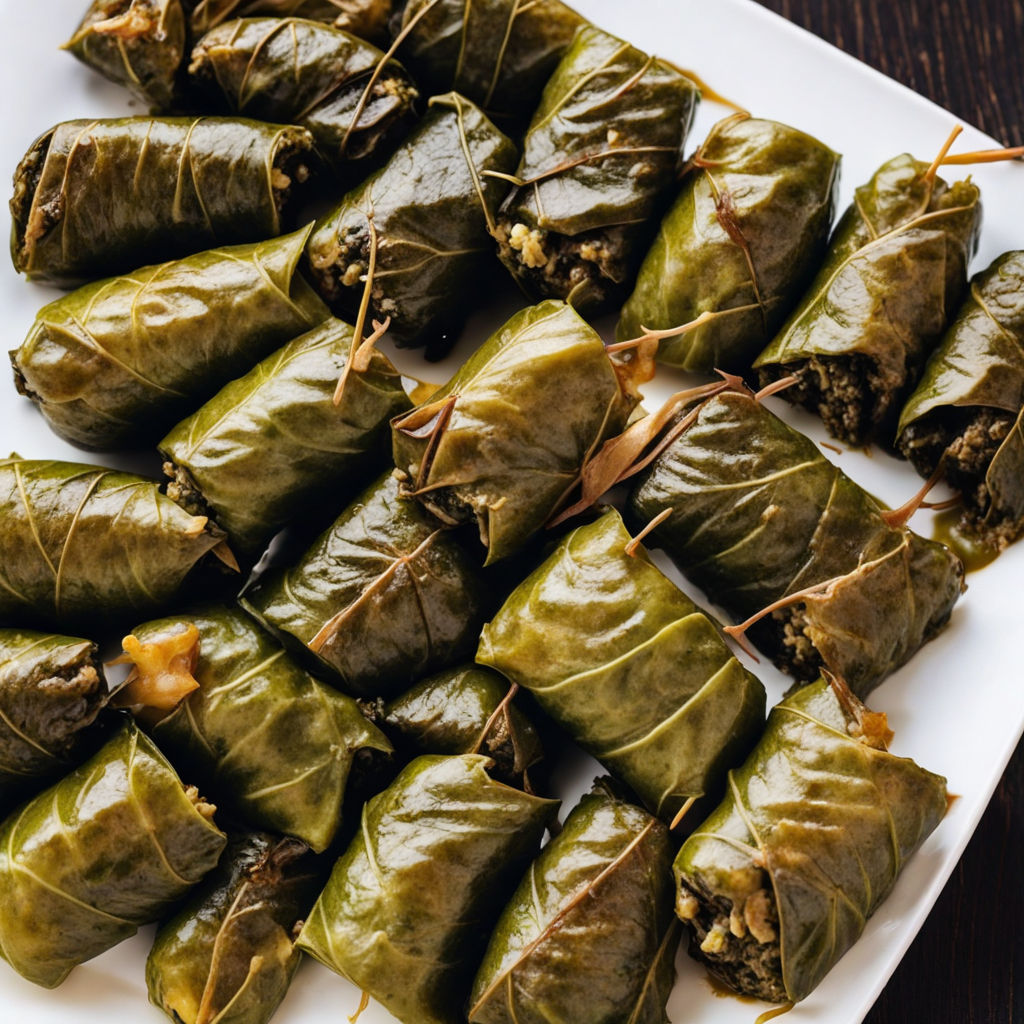Loukaniko
Loukaniko is a traditional Cypriot sausage that embodies the rich culinary heritage of the island. Made primarily from finely minced pork, it is infused with a delightful blend of spices, herbs, and citrus zest, creating a unique flavor profile that tantalizes the palate. The addition of ingredients like orange peel, garlic, and various local herbs gives Loukaniko its distinctive aroma and character, making it a beloved staple in Cypriot cuisine. The sausage is typically encased in natural pork intestines, which contribute to its rustic charm and traditional appeal. When cooked, Loukaniko offers a juicy and succulent bite, with a satisfying snap as you sink your teeth into its casing. It can be grilled, pan-fried, or even added to stews, allowing for versatility in preparation. The flavors deepen and intensify when cooked, as the spices meld together, creating a savory experience that is both hearty and comforting. Often served alongside fresh bread or as part of a meze platter, Loukaniko invites diners to enjoy it in a communal setting, embodying the spirit of sharing that is so central to Cypriot culture. Beyond its delicious taste, Loukaniko tells a story of tradition and craftsmanship, as many families have their own recipes passed down through generations. This sausage is not just a dish; it is a celebration of local ingredients and culinary techniques, reflecting the island’s history and its connection to the Mediterranean. For those adventurous enough to explore this flavorful offering, Loukaniko promises a delightful journey into the heart of Cypriot gastronomy.
How It Became This Dish
The History of Λουκάνικο: Cyprus's Beloved Sausage #### Origins The story of Λουκάνικο (loukaniko) in Cyprus is a rich tapestry woven from the threads of history, culture, and geography. This traditional Cypriot sausage has its roots entrenched in the broader Mediterranean culinary tradition, where various forms of preserved meats have been essential to diets since ancient times. The word "loukaniko" itself is derived from the Greek word "λουκάνικο," which has etymological links to the Latin "lucanica," a type of sausage from the region of Lucania in Italy. The origins of sausages in Cyprus can be traced back to the island’s long history of agricultural practices and animal husbandry. The fertile lands of Cyprus, coupled with its strategic location at the crossroads of Europe, Asia, and Africa, made it an important hub for trade and cultural exchange. Ancient Cypriots utilized various spices and herbs to create flavorful dishes, and the preservation of meats through salting and smoking was a common practice to enhance the longevity and safety of food in a pre-refrigeration era. #### Cultural Significance Loukaniko is more than just a food item in Cyprus; it is a symbol of the island's communal and familial traditions. The preparation of loukaniko is often a social event, typically involving family gatherings during which recipes are passed down through generations. Each family may have its own unique twist on the classic recipe, incorporating local ingredients such as orange zest, fennel seeds, or even red wine, which lend distinctive flavors to the sausage. In Cypriot culture, food plays a pivotal role in social interactions, and loukaniko is often present during festivals, weddings, and other significant celebrations. It is commonly grilled over an open flame and served as part of a meze platter, a traditional dining style that emphasizes sharing and togetherness. The sausage is cherished not only for its taste but also for the memories and stories it evokes, making it a cherished element of Cypriot identity. #### Development Over Time The history of loukaniko reflects the broader socio-political landscape of Cyprus. The island has seen various ruling powers, from the Byzantines and Franks to the Ottomans and British, each leaving their culinary mark on Cypriot cuisine. The Ottoman influence, in particular, is significant in the development of loukaniko, introducing spices such as cumin and coriander, which became integral to its flavor profile. During the Ottoman period, the production of loukaniko became more widespread, with it being sold in local markets and enjoyed by both the Greek and Turkish communities on the island. The traditional method of preparation involves mincing pork (or lamb) and mixing it with spices, salt, and herbs before stuffing the mixture into natural casings. The sausages are then air-dried, allowing flavors to meld and mature. In the 20th century, as Cyprus experienced political turmoil and division, the culinary traditions also evolved. The island's divided communities led to a renaissance in traditional food practices, as families sought to preserve their culinary heritage amid the changing landscape. Loukaniko, as a beloved food item, became a point of pride and a symbol of resilience for both Greek and Turkish Cypriots. #### Modern Times In contemporary Cyprus, loukaniko continues to thrive, adapting to modern tastes while remaining deeply rooted in tradition. The island's culinary scene has seen a resurgence of interest in artisanal food production, with many local producers focusing on high-quality, sustainable methods of sausage making. This has led to an increased popularity of loukaniko beyond Cypriot borders, with chefs and food enthusiasts around the world seeking to replicate its unique flavor. The modern variant of loukaniko often incorporates diverse ingredients, reflecting both global food trends and local agricultural practices. For instance, some artisans use wild herbs, local citrus fruits, or even unique regional wines to create innovative takes on this classic sausage. Moreover, the rise of farm-to-table dining has encouraged many Cypriot chefs to highlight the importance of local sourcing, ensuring that the flavors of the island are well represented. #### Loukaniko in the Global Context As globalization has reshaped food cultures, loukaniko has found its place in the broader Mediterranean cuisine narrative. It is often featured in restaurants that celebrate Mediterranean or Middle Eastern cuisine, showcasing its versatility as a dish that can be grilled, sautéed, or incorporated into stews and casseroles. In addition to its culinary prominence, loukaniko has also gained recognition in the realm of food tourism. Visitors to Cyprus often seek out authentic local experiences, including traditional cooking classes where they can learn the art of sausage making. This engagement not only helps preserve the traditions surrounding loukaniko but also fosters a greater appreciation for Cypriot culture and cuisine. #### Conclusion The history of Λουκάνικο is a fascinating reflection of Cyprus's rich culinary heritage, shaped by its geographical location, historical influences, and vibrant cultural practices. As a beloved dish that embodies the spirit of togetherness and tradition, loukaniko transcends its role as mere sustenance; it serves as a poignant reminder of the island's identity and resilience. From its ancient origins to its modern iterations, loukaniko continues to be a cherished symbol of Cypriot life, bringing people together and celebrating the flavors of the island. Whether enjoyed at a family gathering, a festive occasion, or a casual meal, this traditional sausage remains an enduring testament to the culinary artistry and cultural significance of Cyprus.
You may like
Discover local flavors from Cyprus







